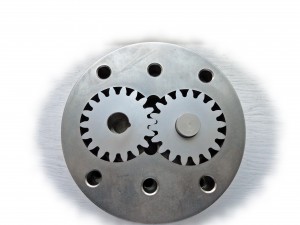Selecting adhesive dispensing equipment – Gear vs. Piston metering
Adhesive dispensing equipment is purchased for many reasons, but mostly, like with other capital expenditures, it’s purchased to, reduce waste, increase productivity, yield greater product reliability, eliminate workers exposure to chemicals, reduce adhesive costs in some instances, and generally result in greater profits.
Additionally, an increase in production can sometimes force companies into the purchase because the mix-by-hand method is no longer adequate to maintain production.
Our responsibility at Ashby Cross is to ensure the customer’s needs are met in designing an adhesive dispensing system that will meet their application.
There are a number of considerations in the design. The primary one is the adhesive that will be processed. This drives the type of metering we would select.
A short primer on metering systems
Gear and cylinder/piston are the two most widely used metering devices available when designing adhesive dispensing equipment. Each is very precise and will accurately proportion the adhesive.
We would consider such things as viscosity, specific gravity, temperature, fillers, filler type, and ratio when deciding which type of metering to use.
The nature of gear pumps, very tight tolerances with rotating parts, does not lend itself to processing highly filled or abrasive fillers in the adhesive. In this instance we would opt for the cylinder/piston metering with abrasion resistant seals.
In either case, the basic system design makes use of two proportioning devices (gear pump or cylinder/piston). Gear pumps are defined by their specific output per revolution, for instance, 3 cc per revolution. Using an example of a 2:1 by volume ratio material we would combine a 3cc/rev. with a 6cc/rev. pump and rotate them at the same speed. The output would be 2:1 by volume.
We can also vary the relative speed of the gear pumps to achieve the desired ratio. For instance combine two 3cc/rev. pumps and rotate one half as fast as the other.
Ratios of 100:100 through 100:7 by volume (continuously through the range) can be achieved by combining different pump sizes and relative speeds.
The benefits of a gear metering system include.
- Few moving parts
- Variable flow rates
- Self bleeding.
- Adjustable ratio
Cylinder/piston systems offer a broader application range as they can be used in heavily filled, abrasive applications as well as unfilled applications. Viscosity can range from thin to a million or more cps.
Ratio, in the fixed ratio machines, is achieved through the relative volumes of the two cylinders.
For the same 2:1 ratio adhesive example we used above the resin cylinder would have a volume twice that of the catalyst cylinder. The typical Ashby Cross system is pneumatically and hydraulically driven. The hydraulic drive is provided by the adhesive which enters the machine at elevated pressure.
The pneumatic drive is an air cylinder that works in conjunction with the hydraulic pressure.
Ashby Cross has manufactured adhesive dispensing equipment for over 35 years. We welcome your dispensing questions – post them in the comments, use our Contact page, or call us at 978-463-0202

